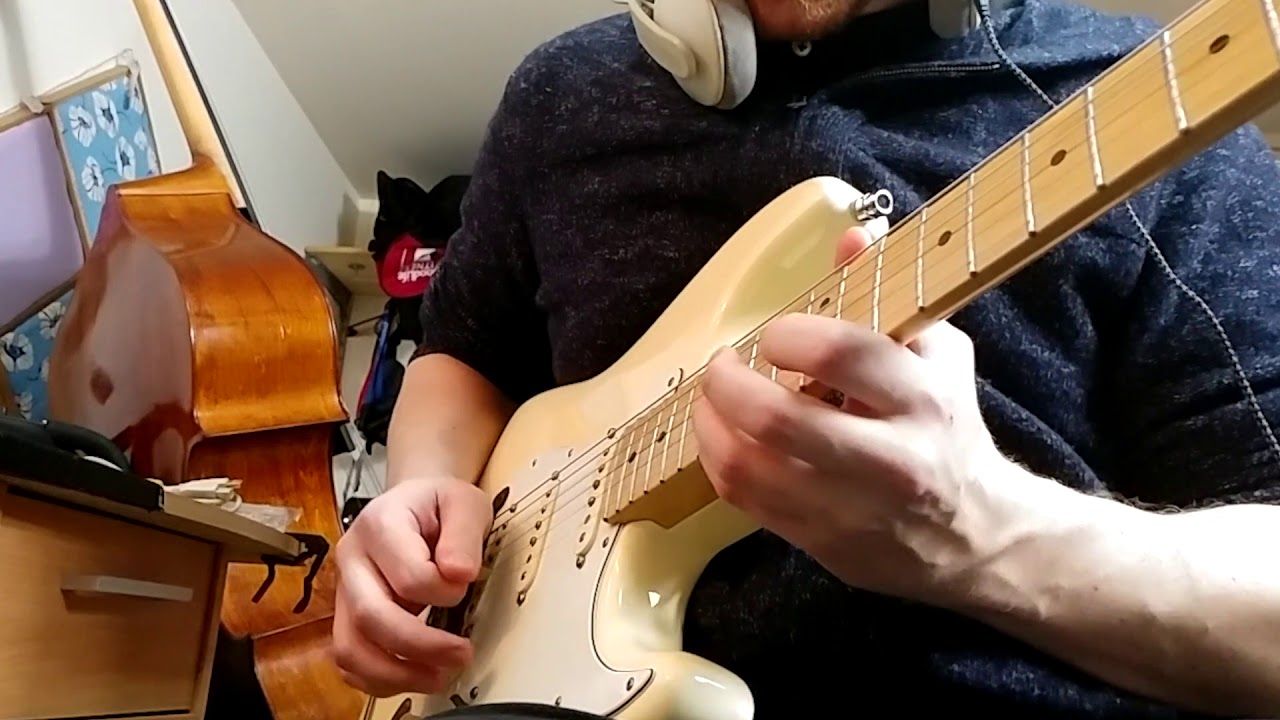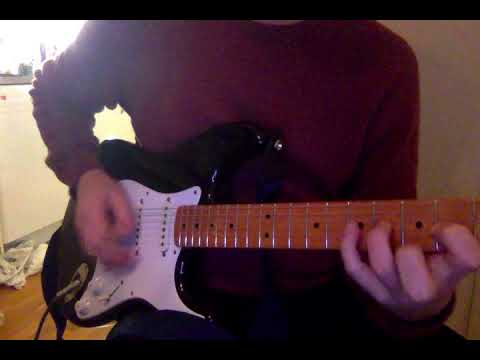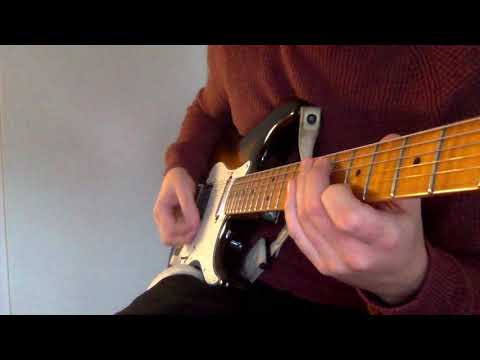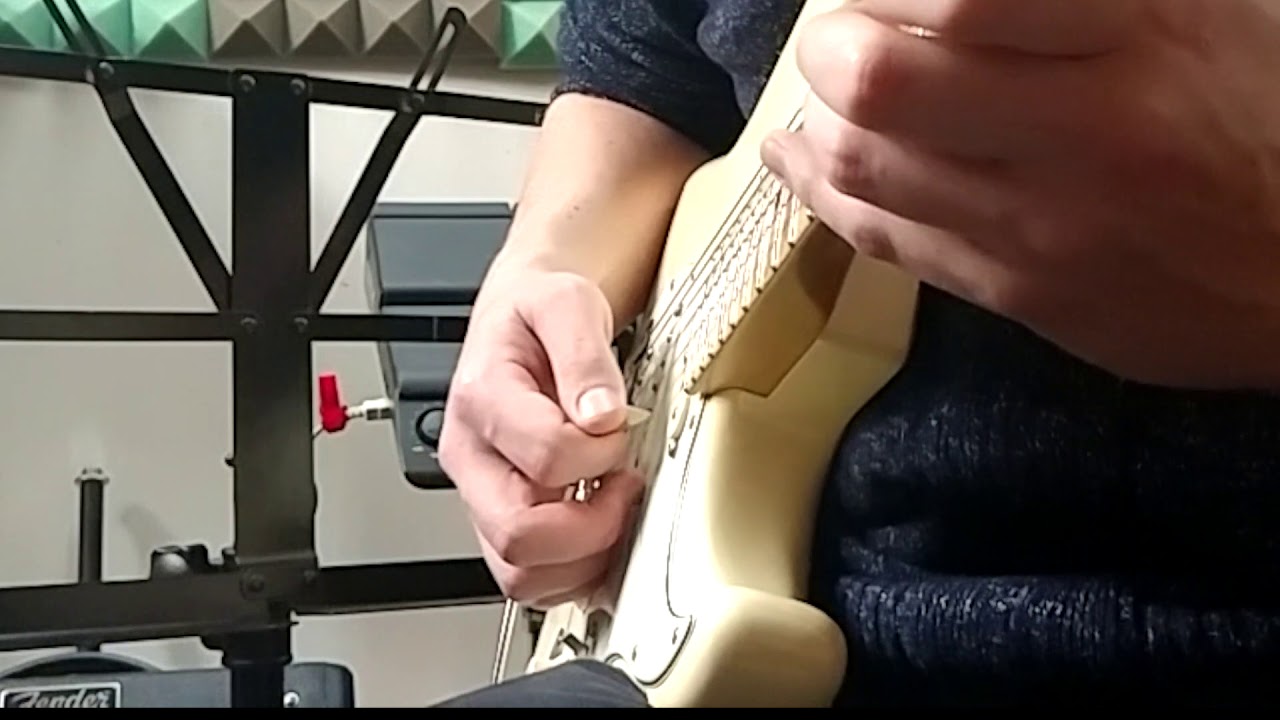OK, WOW!! That is amazing development in just a few days! This is shred level of speed and really great picking. It already looks really confident, like you’ve been doing this for years. I’m sure you can feel the difference in efficiency between this new style of playing and the style in your first video. This is great alternate picking motion with no string hopping tendencies.
Thanks for that @qwertygitarr. This is close to something I used to practice years ago, before I got into CtC. A saxophone teacher I had at the time gave me some advice on playing fast that was along the lines of “sprinters don’t win marathons, and marathon runners don’t win sprinting contests, so you’ve got to practice slowly but ultimately you also have to practice fast if you want to play fast”. I don’t feel the efficiency quite yet as I come from a mostly improvisational background, and with this new approach to picking, I can’t improvise anything! So it feels a bit like imposter syndrome at this point. But the proof is in the pudding;I can’t do what I’m doing there with my string-hopping/DBX/crosspicking/whatever motion that I’ve been doing for the last 15+ years. So I can see the light at the end of the tunnel, but I’m not there yet.
Now, how does this feel? Is it effortless or does it feel like work? Reason for asking is that it is important that you don’t develop a technique that is based upon excessive force. You want the fast playing to feel easy and fun.
I’ll have to get back to you on this after some more work. It definitely feels alien, but comfort is kind of a combination of physical & mental. I feel like it’s physically far less straining when I am reaching for speed compared to the DBX/String-Hopping technique of old, but it’s a physical and mental challenge to convince my hands to do it. I always say to my students that your fingers are like bad dogs; they need to be trained! In this case, it’s my right hand that needs to go to puppy training.
Another reason for asking is that all the licks you are playing here are changing strings after upstrokes, in other words, the opposite of what we guessed would work best for you.
Yes, I am completely aware of this. I have been messing around with all kinds of different wrist/forearm motions and I chose to work on this one because it feels the closest to the technique that I’ve used all along. I’m so used to starting on downstrokes, and economy picking is SO freakin’ foreign to me that this option allows me to retain more of my strengths.
I will say this though: my trem picking is faster and slightly more accurate with DSX than USX, but there is considerably more tension there at the highest point of speed. I’ve also experimented with some different pick grips (I’m a recovering tri-gripper), and different levels of supination (hope I’m using that term correctly). In the grand scheme of things, I can get almost any combination I’ve tried happening with tremolo around 16ths @ 175BPM. But I settled on a USX motion because it’s the closest feeling to what I know and most relaxed overall. My hand doesn’t feel like it needs to ball up (it does a bit with DSX at the highest speed), and therefore I have access to my fingers for hybrid picking, chording etc.
Three things though… First, I would ask you to at least TRY a few licks with string changes after downstrokes just to see how that feels. You might already have done this but since you didn’t comment on it, it would be interesting to hear your experience with it.
I didn’t try it yet! It’s a hell of a time convincing my hand to start on an upstroke. I will hit this on my next post though, absolutely. Going to take the rest of today off for some R&R and get back to the shed tomorrow evening!
Second, even if your goal is to be able to play over all strings in the way you are shredding the chromatic scale here, I still think it is important that you get comfortable playing simple things first. And when I say simple, I mean simple and infinitely repeatable. The Yngwie ascending or descending fours along a string is NOT a simple lick, since it requires a lot of focus on the changing left hand fingerings which defeats the purpose at this stage. The point with a simple lick is that you DON’T need to focus on the left hand but on the sync, consistency and smoothness of you picking. Choose whatever ostinato you want but keep it really simple.
Yes! I’m just starting to realize exactly how hard it is to get your hands in sync. It reminds me of starting over again or learning a new instrument (like the trumpet). Sure, I know all of the notes and the theory, but I don’t have the fingerings or the ability to recall them quickly. My goal by the end of the week is to get all of my 2NPS 7th chord arpeggios happening, i.e. Gmaj7, Gmin7, G7, Gmin7b5, G7#5, G7#11, Gminmaj7, etc. I think that’s a simple enough shape and one I can play fast with legato, so it makes sense to me to use that. I’m also going to focus on that one-string example you suggested and then played in the video. That is a big challenge for me, sadly!
Regarding practicing in ‘bursts’; I’m having a difficult time getting into repetitions. It seems like if I slow down to get the connecting notes (even using chunking), I switch back to my old string-hopping ways. The title of my thread sums this up perfectly; my hand is getting really confused! As soon as I speed up to get into the correct USX motion, I can’t get back to the starting note in time. Any suggestions?
Also thank you for the video, absolutely shredding mate, I hope to get there one day. I checked out some of your YouTube videos too, absolutely killing my friend. Great time feel, great tone, and an awesome arsenal of techniques. I especially envy the tapping stuff! Appreciate your time and advice immensely.
–
Thanks for chiming in @tommo. I’ve watched that video a few times, but I think another 10 or so views are warranted. Maybe I’ll understand it by then 
Cheers and sorry for the novel,
J











